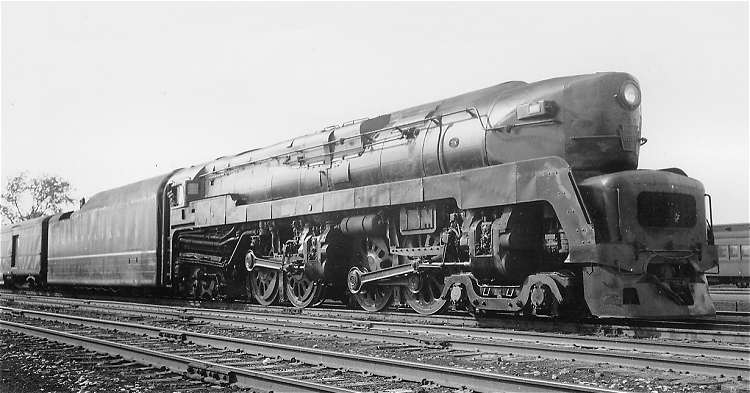In the mid-to-late 1940s the T1 4-4-4-4 duplexes handled the Pennsylvania Railroad's premier passenger trains in non-electrified territory. They were known for their speed, and had the horsepower to pull a 16-car passenger train at a steady 100 miles per hour — outperforming the 5400-horsepower diesels of the day, and making it possible to replace double-headed K4s Pacifics with a single locomotive. The T1 class had 80-inch drivers and four 19¾x26-inch cylinders, and sustained 300 p.s.i. of boiler pressure. (Nine locomotives later had their cylinder diameter reduced to 18¾x26.) They had a grate area of 92 square feet, 4209 square feet of evaporative heating surface, and 1430 square feet of superheating surface. The T1 developed 58,300 pounds of tractive effort. No. 5527, a Baldwin product, poses above at Englewood Station, Chicago, in a photo of indeterminate origin. Although originally built with a more streamlined front end having three side "portholes" (see the preceding photos of No. 5526), all or most were later modified with access steps from the pilot to the catwalk as shown here. None of the T1s survive — the last few went to scrap in 1954, according to one source — but they will be remembered as a bold attempt to meet the challenge of the diesel on its own terms.

|
|
|